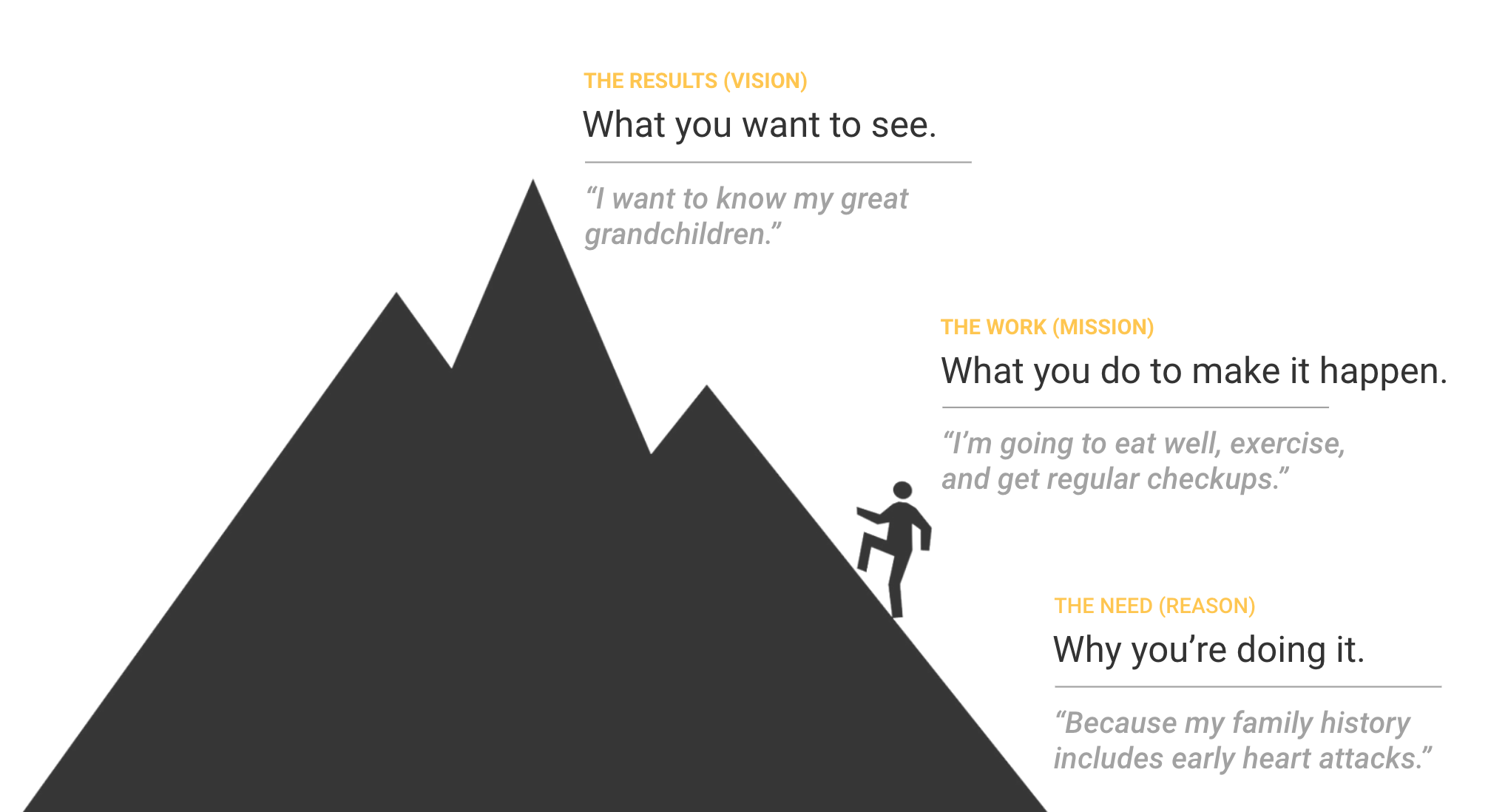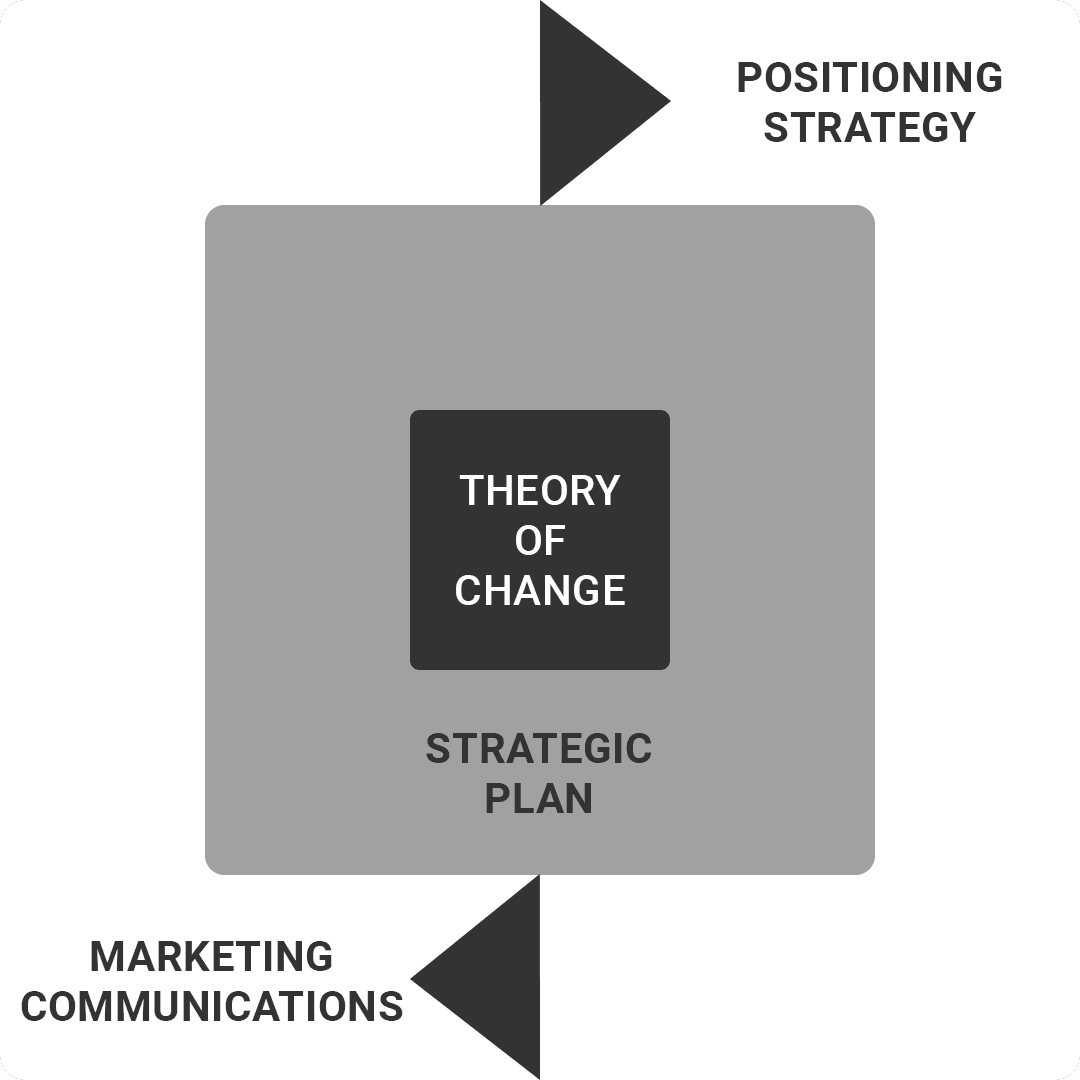Theory of change: be fundable.
The need, the work, and the results of your model — to maximize funding

KEVIN L. BROWN
A theory of change is any nonprofit’s most important document. It’s critical to creating sustained impact and raising money alike. But developing one can be daunting; there’s no standard tool or format.
Many theories of change are so abstract — charts, arrows, graphs, assumptions — they’re impossible to action. Foundations often require a theory of change to be crafted within proprietary (sometimes arbitrary) parameters. Even popular concepts, such as the results chain or logic model, have various versions.
After working with 340 clients in 51 countries, it’s clear there is consensus about one thing: nonprofits feel like they’re grasping at straws when trying to articulate impact.
But the first step in any impact journey is documenting the change you wish to see in the world — your ambition. Your theory of change.
So what are nonprofits to do? Here’s a simple theory of change guide. What it is, why it matters, and how to create one — along with some final advice and tips.
A reminder: the Fundable/Findable FrameworkTM
Every nonprofit needs tight messaging, strong storytelling, sharp visuals, and cohesive communications to attract and retain donors.
But bold brands are built from the inside out. Before you can be findable externally, you must be fundable internally. That’s why your theory of change and strategic plan must come before your positioning strategy and marketing communications.
We guide early- and growth-stage nonprofits through this process using our Fundable/Findable Framework.TM
What it is: some definitions.
A theory of change is a process and document that details the need, the work, and the desired results of your model.
According to the Center for Theory of Change, it’s a comprehensive description of how and why a desired change is expected to happen in a particular context. And Harvard scholar Carol Weiss — who popularized the term theory of change — says it’s a way to describe the assumptions that explain the mini steps that lead to the long-term goal. Plus the connections between program activities and outcomes that occur along the way.
A theory of change should relate to the essence of your plans for doing good — your social impact. This point seems obvious, but it’s worth noting. People get it mixed up with plans for delivery, growing the organization, funding, etc. These other plans are important. But they should be postponed until you first understand how you want to create impact. Build from there.
Monitoring, evaluation, and learning also come later. This theory of change is about thinking through and communicating your ambition for change. It’s one side of a coin. The other side is data collection and evaluation to test whether things actually happen that way in the real world.
A good theory of change doesn’t simply reflect what an organization is already doing. Instead, it articulates what the organization wants to be held accountable for. Then it works backward to identify necessary activities, strategies, resources, capabilities, and so on. It’s aspirational but rooted in today’s reality.
“If your theory of change work hasn’t led you to propose any changes to [strategy], you probably haven’t taken a hard enough look.”
MATT FORTI
Why it matters: income & impact.
A surprising majority of nonprofits don’t have a current theory of change. Many leaders are unsure why it matters. Or say they don’t have time. Here’s the deal: a theory of change is what you’re selling. Unless you have a tangible product a customer is buying, your theory of change is what donors are investing in.
As we shared in this Acumen Academy learning lab, a theory of change helps you drive income and impact in the following ways:
A good reason and vision motivate people, inside and out.
A tight mission keeps you focused, builds expertise, and creates efficiencies with staffing.
Clear pathways to change will influence fundraising targets.
Well-documented partner strategies help attract partnerships.
Beyond clarifying the intended impact, a theory of change also focuses on the steps between activities and impact — or filling in the missing middle. This helps you identify gaps, priorities, and things to improve. Ultimately leading to clearer goals and better plans for achieving them. In other words, it’s essential for operations. It’s your roadmap.
Driving meaningful impact often requires saying NO more than saying YES, in order to focus. And that takes courage. This process and document will aid in that courageous focus.
Even in the social sector — where meaning and motivation abound — teams need to rally around a singular greater ambition. If you set a clear vision, you and your teams will ultimately find the right strategy. But if you don’t have a clear vision, no strategy will save you.
“He who has a why to live can bear almost any how.”
FRIEDRICH NIETZSCHE
How to create your theory of change: the Mighty Ally process.
We define a theory of change through three big sections (the need, the work, the results) and 15 total elements within. It takes a couple of days in a workshop with clients. Weeks of independent research and analysis. A full insights deck. Then ultimately, a one-page blueprint at the end.
Our proprietary tool takes inspiration from modern approaches, such as the Impact Management Project and Mulago’s Design Iteration Format, to traditional frameworks, like the logic model.
Here’s the high-level summary:
What is the specific need you serve in the world? This section is the problem, the people, and the reason behind your work.
What is your organization’s work? Here you define your inputs, interventions, partners, behaviors, big idea, and mission.
What are the desired results of your model? In this section, document your pathway, outputs, outcomes, 10-year target, and vision.
Theory of change elements
To think of this process visually and metaphorically, we adapted a Brand the Change tool they call “The Climb.” Imagine a person wanting to climb a mountain. They have a reason for doing so. They pick a peak. Then they determine a route up — likely changing course a few times along the way.
If you do nothing else, your theory of change should at least list your reason, mission, and vision. Those are, by far, the three most critical components — for your upcoming marketing communications as well.

Final advice and tips.
Developing a theory of change can feel daunting. There’s a reason nonprofits hire experts like us to lead them through it. But you can make great progress without spending a single dollar. Here’s how:
Don’t sweat the format.
Use the tool or template that works well for your organization and your funders, even if it’s a rudimentary whiteboard diagram. The Mulago DIF we mentioned is quite simple, and they’re one of the most prestigious funders out there. While its questions take great thought, the DIF itself is just text on a page with an arrow or two.
We love Mulago’s one-line theory of impact. Write a sentence structured as “If we do X, then somebody does Y, and Z outcome ensues.” Like: “If we create a carbon certification scheme for retail products, then consumers will preferentially buy products with better carbon profiles, and CO2 emissions will go down.”
So don’t labor over what the theory of change looks like. Instead, sweat the thinking behind the model and details within.
Find, measure, and communicate the core.
The truth is, most nonprofits have multiple programs or products because complex change often requires complex solutions. But there are typically one or two elements the rest hinges on. Identify that core, develop evidence measures for that core, and communicate that core. Then add to it and innovate around it over time. The core to us means the things you have to do always everywhere vs. those you can sometimes do in some places.
Graduate beyond activities and outputs.
Despite the classic logic model existing for decades, many nonprofits stop short at measuring outputs alone. Outputs are the immediate, often numerical, results of activities. While these data points are important to link causes and effects, outputs are just a means to an end. And most savvy funders now demand evidence around outcomes and impact: actual changes in conditions on the ground.
Nonprofits often think it’s too hard to measure outcomes without an M&E team. But it’s not too hard to start. If you’re working with at-risk youth, your theory of change might say an outcome is an increase in confidence. Don’t just measure the number of young adults in your program. That’s a vanity metric. At least survey participants at the beginning and end of the intervention. Ask on a five-point Likert scale, “Do you feel in control of your future?” And there you have your first outcome measurement around increased confidence.
Is the logic… logical?
However you choose to do so, document your theory of change — today’s initial hypothesis or reality. Then, once it’s in first draft form on paper, spend time to ensure it flows. From problem to vision and all points in between, does the logic make sense between the 15 steps?
A snapshot in time.
As a program or organization grows and develops, so does its theory of change. This document is merely a snapshot of your ambition at one point in time. Meaning a theory of change is a living document and a work in progress — a draft that can be refined as the conditions on the ground change.
You did it, now use it.
Once you have your theory of change, use it! Publish and share it widely, especially with funders. Everyone involved in the organization should be familiar with it. It’s the jumping-off point for further conversations about how things are going, your strategies, and your tactics.
“If you were a screenwriter, you build a storyboard. If you were a teacher, you draft a curriculum plan for the year. If you were a CFO, you build a financial model that projects how you think money will flow. For impact professionals, building a theory of change can help you map out what you’ll need to achieve over time in order to reach both your short-term and long-term goals.”
ACUMEN ACADEMY
Read more articles
Ready to get fundable and findable?
Learn how we can help maximize your funding.

